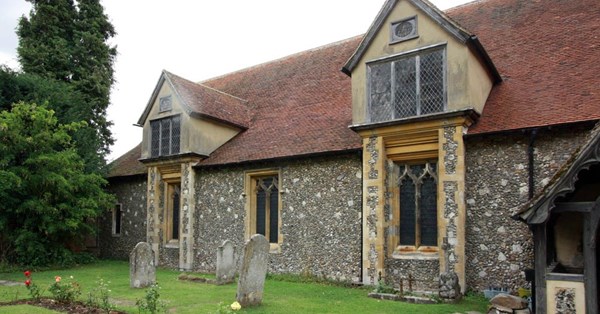A MOTHER has been granted a faculty by the Consistory Court of the diocese of Chelmsford for the exhumation and reinterment of the remains of her son, who took his own life more than 12 years ago, and could not, at that time, be interred in the parish where his home had been.
Diane Smith sought a faculty for the exhumation of the cremated remains of her son, Jonathan, who took his own life on 10 January 2013. The family had lived in Blackmore since 1971, and Jonathan had grown up there. Mrs Smith stated that, at the time of his death, the Priory Church of St Laurence, Blackmore, was experiencing difficulties, and the incumbent would not make himself available to conduct Jonathan’s funeral.
Jonathan’s cremated remains were, therefore, interred in the churchyard of St Paul’s, Bentley Common, where some members of Mrs Smith’s family were buried. The headstone over Jonathan’s grave also contained the details of his older brother, Anthony, who had died shortly after his birth and had been buried without his parents’ consent in an unmarked grave.
Mrs Smith spoke of the shock of Jonathan’s death, and said that she and her family “did not know which way to turn” and were “not thinking properly”. She said that the priest who had conducted the funeral stepped in to assist with finding a place to inter Jonathan’s remains. She said that “to save a fuss” and “for no other reason” the family had agreed to the churchyard at Bentley Common. Jonathan had expressed no wishes with regard to the resting place of his remains, and, his mother added, “suicide does not give you that chance.”
Jonathan’s father, William Smith, had died recently, and was buried in the churchyard at Blackmore. Mrs Smith wished her son’s ashes to be buried in his father’s grave.
The diocesan Chancellor, the Worshipful Philippa Hopkins KC, said that the starting point in the principles to be applied in a petition for an exhumation was a presumption against exhumation. A faculty would be granted only exceptionally.
It was for a petitioner to satisfy the Chancellor that there were special circumstances in the case which justified the making of an exception from the norm that Christian burial was final. Whether a case was exceptional was for the Chancellor to determine on the facts, and, ultimately, it was a matter for the Chancellor’s discretion.
Having considered the material before her, the Chancellor concluded that this was one of those exceptional cases in which exhumation could be justified.
Jonathan had died suddenly and unnaturally, leaving no indication of his wishes in relation to the final resting place for his remains. Blackmore was his home. His father was now buried at Blackmore. The effect of interring Jonathan’s remains there would be to create a family grave, for which Mrs Smith would care while she lived.
Jonathan’s remains were presently interred with other, more remote, family members, but the bringing together of his remains with those of his father, and in due course his mother, would create a family grave for that immediate and close family, the Chancellor said. It would also enable the deceased Anthony to be commemorated together with his brother and his father.
While it could not be said that there was a “mistake in the decision to inter Jonathan’s remains at Bentley Common”, the Chancellor said, it appeared that “the decision was made in circumstances that were far from ideal.” She said that, “whether rightly or wrongly, [Mrs Smith] and her husband felt that they could not seek interment of Jonathan’s remains at Blackmore”. That was a matter that the Chancellor took into account when exercising her discretion.
The headstone over Jonathan’s grave at Bentley Common would be moved to the grave at Blackmore, and each of Jonathan, Anthony, and their father, William, would be commemorated in a single headstone. In due course, Mrs Smith’s name would be added to it. If there was insufficient space for all the names on the existing headstone from Bentley Common, there would have to be a new memorial for all three deceased. No further faculty would be required for that. It was a matter that could be discussed between Mrs Smith and the incumbent at Blackmore.
A faculty was granted for the exhumation of Jonathan’s remains from the churchyard of St Paul’s, Bentley Common, and their reinterment in the grave of William Smith in the churchyard of the Priory Church of St Laurence, Blackmore. An appropriate memorial would be placed over the grave of William Smith to commemorate him and his sons.

















